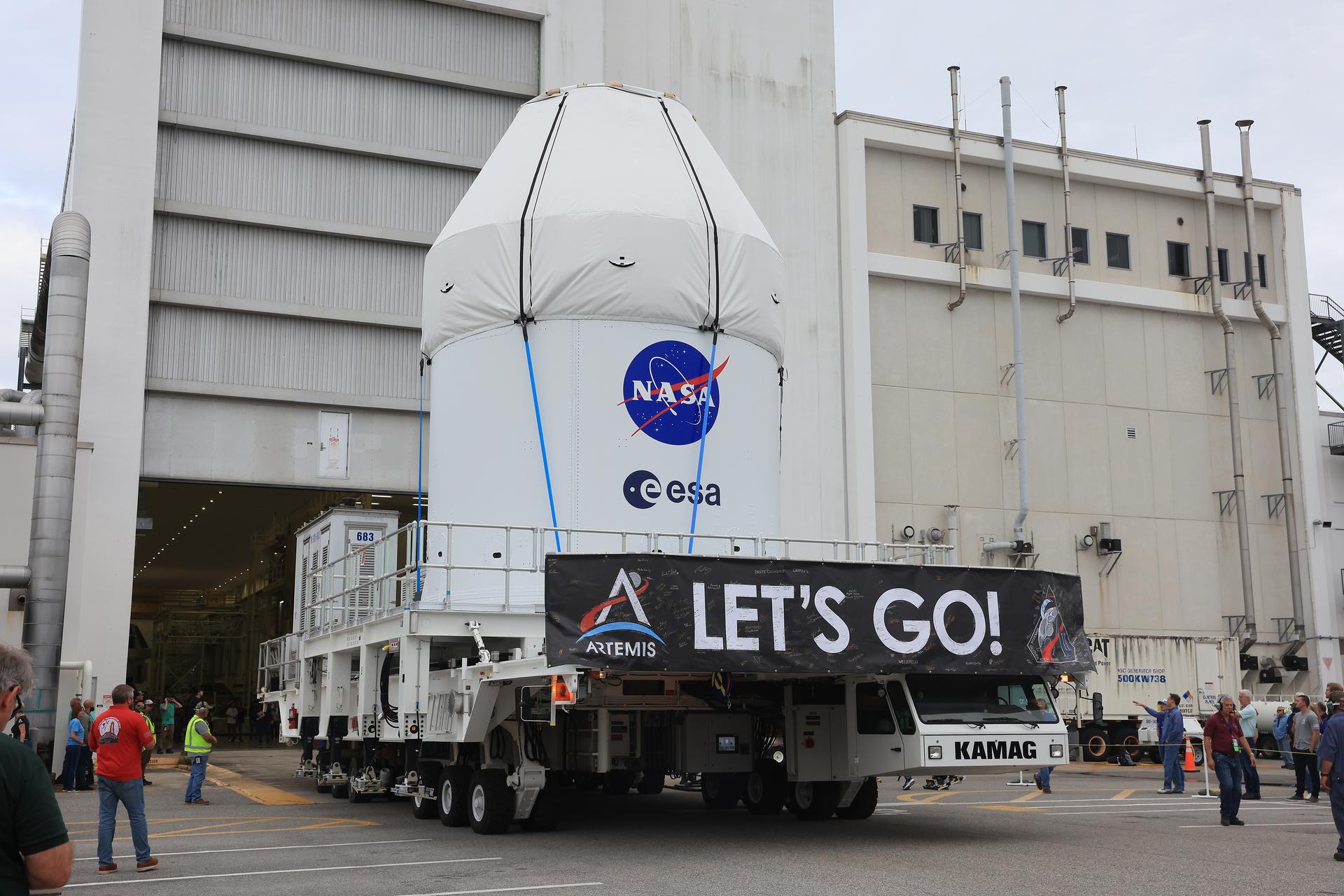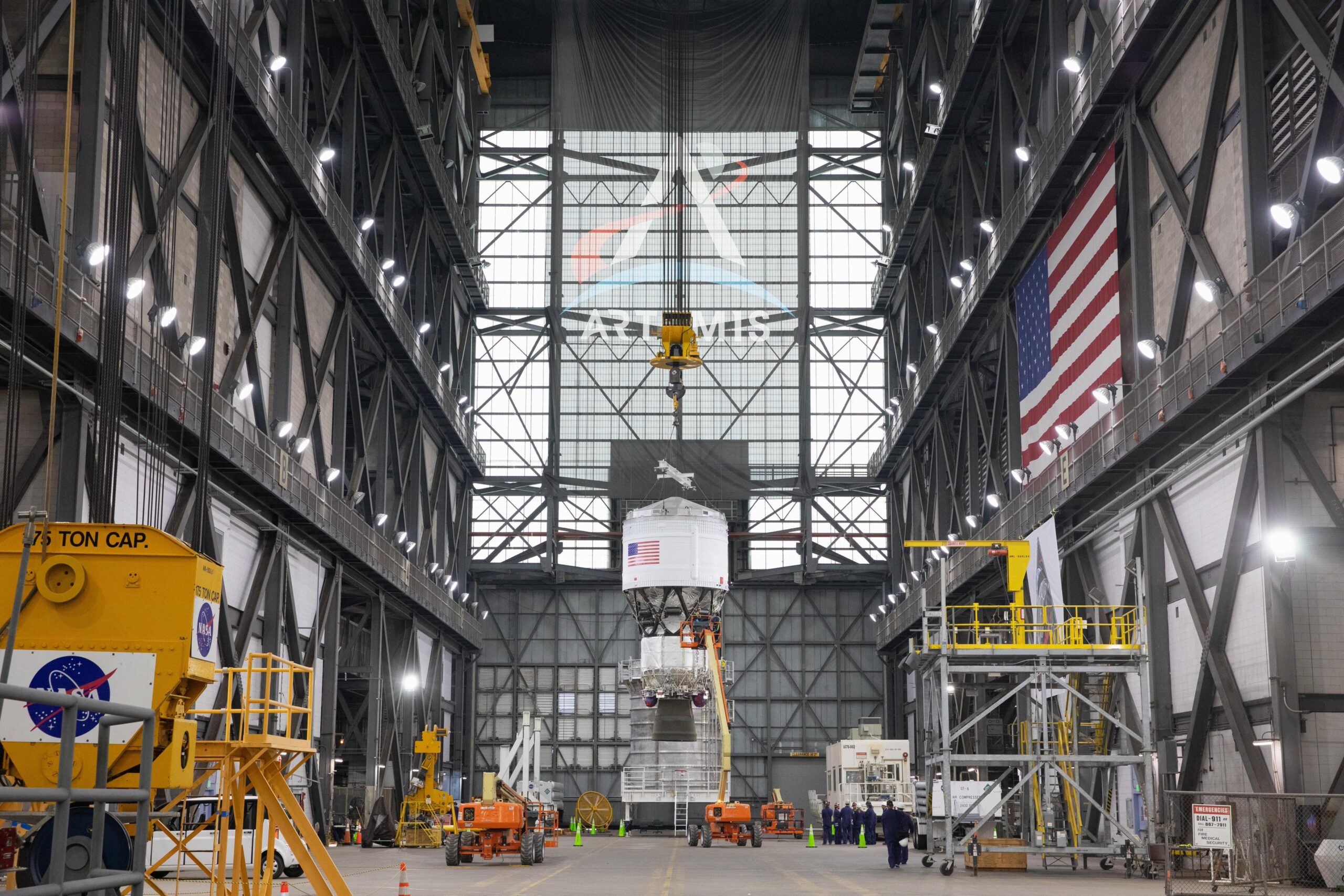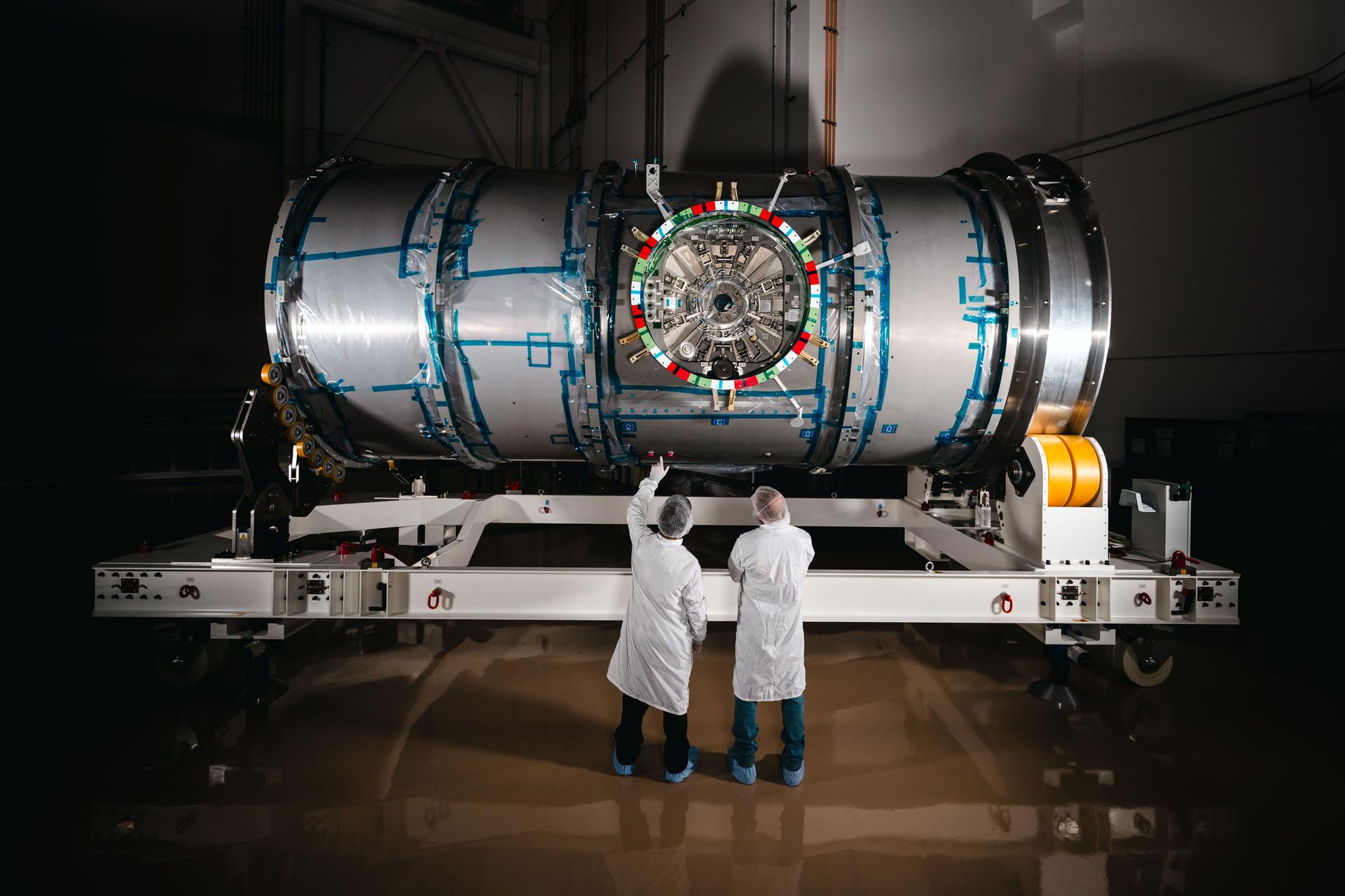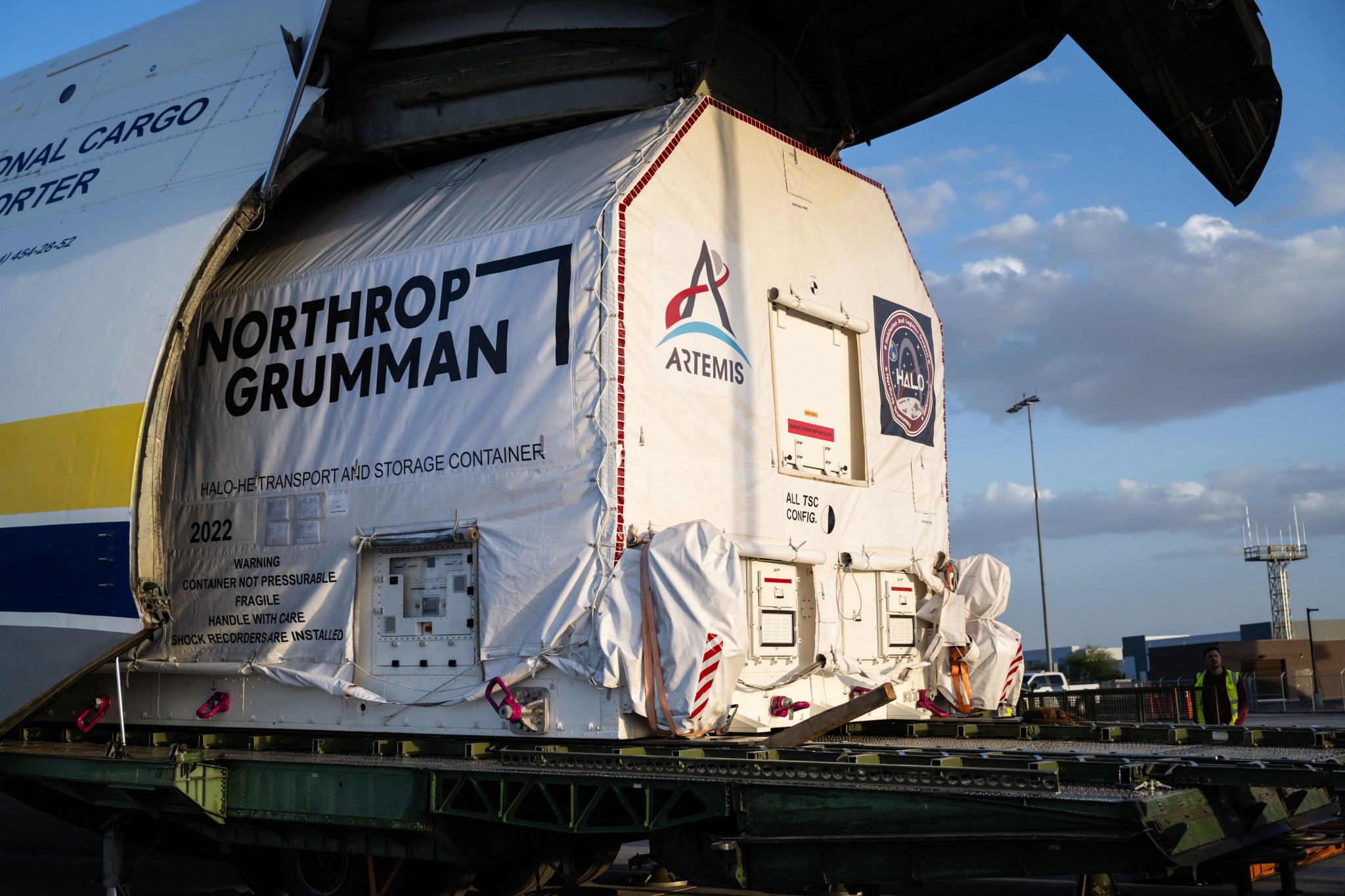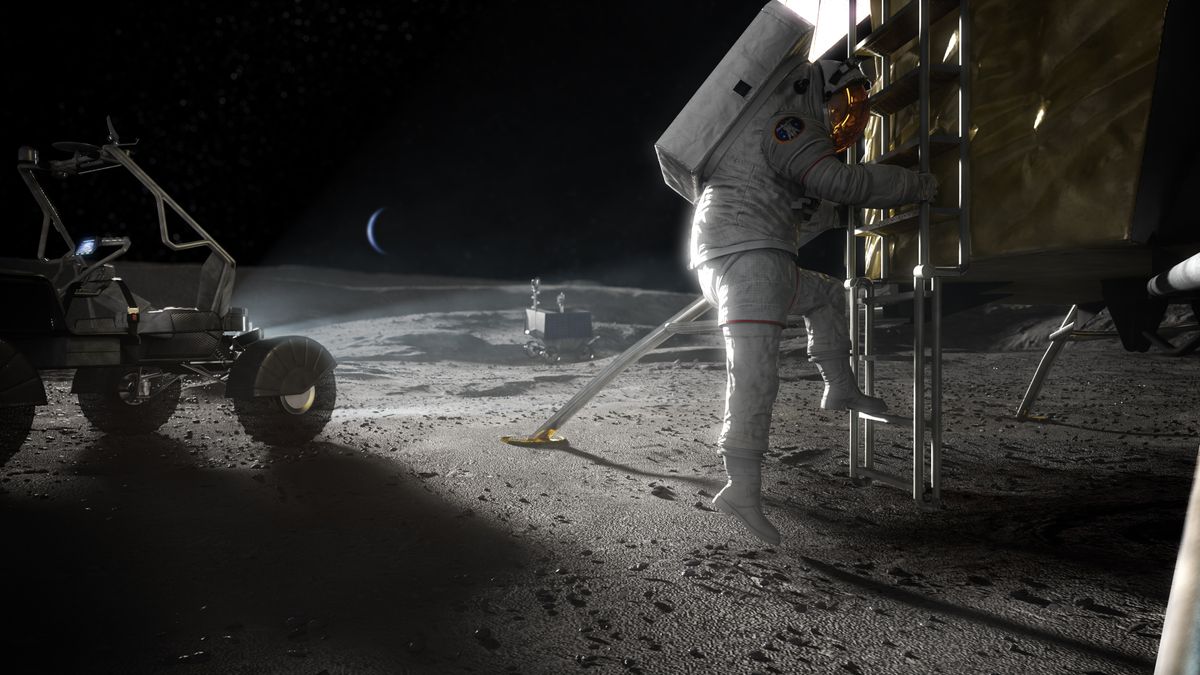As NASA partners with American industry to deliver science and technology payloads to the Moon, a dedicated team behind the scenes ensures every mission is grounded in strategy, compliance, and innovation. Leading that effort is Aubrie Henspeter, who advises all aspects of procurement for NASA’s Commercial Lunar Payload Services (CLPS) initiative—one of the cornerstone projects supporting the Artemis campaign. Official portrait of Aubrie Henspeter. NASA/Bill Stafford With 20 years at NASA, Henspeter brings multifaceted experience to her role as CLPS procurement team lead in the Lunar & Planetary Exploration Procurement…
Read MoreTag: Artemis
NASA Progresses Toward Crewed Moon Mission with Spacecraft, Rocket Milestones
Technicians move the Orion spacecraft for NASA’s Artemis II test flight out of the Neil A. Armstrong Operations and Checkout Building to the Multi-Payload Processing Facility at Kennedy Space Center in Florida on Saturday, May 3, 2025. NASA/Kim Shiflett Engineers, technicians, mission planners, and the four astronauts set to fly around the Moon next year on Artemis II, NASA’s first crewed Artemis mission, are rapidly progressing toward launch. At the agency’s Kennedy Space Center in Florida, teams are working around the clock to move into integration and final testing of…
Read MoreNASA’s Artemis 2 moon rocket gets 2nd stage even as Trump tries to scrap Space Launch System (photos)
The Artemis 2 megarocket set to launch NASA’s next astronauts to the moon in 2026 is almost completely assembled. The giant Space Launch System (SLS) rocket continues to grow inside the NASA’s Vehicle Assembly Building (VAB). Technicians at the Kennedy Space Center (KSC), in Florida, stacked the rocket’s second stage onto the launch vehicle Thursday (May 1). The Interim Cryogenic Propulsion Stage (ICPS) is responsible for carrying the Orion spacecraft and crew the rest of the way into orbit around the Earth, and then sending them on their way to…
Read MoreLunar Space Station for NASA’s Artemis Campaign to Begin Final Outfitting
3 min read Preparations for Next Moonwalk Simulations Underway (and Underwater) Gateway’s HALO module at Northrop Grumman’s facility in Gilbert, Arizona, on April 4, 2025, shortly after its arrival from Thales Alenia Space in Turin, Italy. NASA/Josh Valcarcel NASA continues to mark progress on plans to work with commercial and international partners as part of the Gateway program. The primary structure of HALO (Habitation and Logistics Outpost) arrived at Northrop Grumman’s facility in Gilbert, Arizona, where it will undergo final outfitting and verification testing. HALO will provide Artemis astronauts with…
Read MoreNASA Marshall Fires Up Hybrid Rocket Motor to Prep for Moon Landings
4 Min Read NASA Marshall Fires Up Hybrid Rocket Motor to Prep for Moon Landings NASA’s Artemis campaign will use human landing systems, provided by SpaceX and Blue Origin, to safely transport crew to and from the surface of the Moon, in preparation for future crewed missions to Mars. As the landers touch down and lift off from the Moon, rocket exhaust plumes will affect the top layer of lunar “soil,” called regolith, on the Moon. When the lander’s engines ignite to decelerate prior to touchdown, they could create craters…
Read MoreNASA Selects Finalist Teams for Student Human Lander Challenge
NASA has selected 12 student teams to develop solutions for storing and transferring the super-cold liquid propellants needed for future long-term exploration beyond Earth orbit. The agency’s 2025 Human Lander Challenge is designed to inspire and engage the next generation of engineers and scientists as NASA and its partners prepare to send astronauts to the Moon through the Artemis campaign in preparation for future missions to Mars. The commercial human landing systems will serve as the primary mode of transportation that will safely take astronauts and, later, large cargo from…
Read MoreNASA Welcomes Gateway Lunar Space Station’s HALO Module to US
2 min read Preparations for Next Moonwalk Simulations Underway (and Underwater) Gateway’s HALO (Habitation and Logistics Outpost) arrives in Mesa, Arizona, after traveling from Italy, where Thales Alenia Space fabricated its primary structure. Delivered by cargo aircraft to Phoenix-Mesa Gateway Airport, HALO will be transported to Northrop Grumman’s facility in Gilbert for final outfitting. NASA/Josh Valcarcel A core component of Gateway, humanity’s first space station around the Moon, is now on American soil and one step closer to launch. In lunar orbit, Gateway will support NASA’s Artemis campaign to return…
Read MoreArtemis Astronauts & Orion Leadership Visit NASA Ames
2 min read Preparations for Next Moonwalk Simulations Underway (and Underwater) Astronauts Victor Glover and Christina Koch tour the Arc Jet Facility at NASA’s Ames Research Center, learning more about the testing equipment’s capabilities to analyze thermal protection systems from George Raiche, thermophysics facilities branch chief at Ames. NASA/Donald Richey As NASA prepares to send astronauts to the Moon aboard the Orion spacecraft, research, testing, and development at NASA’s Ames Research Center in California’s Silicon Valley has played a critical role. Recently, Ames welcomed Artemis II astronauts Christina Koch and…
Read MoreNASA completes SLS core stage stacking for Artemis 2 moon mission (photos)
NASA’s next moon rocket is coming together, piece by piece. The core stage of NASA’s next Space Launch System (SLS) rocket recently completed integration with the vehicle’s side boosters inside the agency’s Vehicle Assembly Building in Florida. SLS will launch NASA’s Artemis 2 mission to fly four astronauts aboard an Orion spacecraft around the moon and back sometime next year. “Technicians joined the core stage March 23 with the stacked solid rocket boosters for the mission at NASA’s Kennedy Space Center (KSC),” NASA officials wrote in a statement Monday (March…
Read MoreNASA says removal of ‘first woman, person of color’ language from Artemis websites ‘does not indicate’ moon mission crew change
NASA websites no longer state that the Artemis 3 lunar mission will aim to land the first person of color and the first woman on the moon — a longstanding goal of the Artemis program that the agency has consistently called upon when discussing lunar plans. The change appeared this weekend as NASA continues to cancel programs dedicated to diversity, equity, inclusion and accessibility (DEIA) as well as purge its websites of any language related to these efforts. These decisions are guided by the Trump administration’s push to end programs…
Read More
